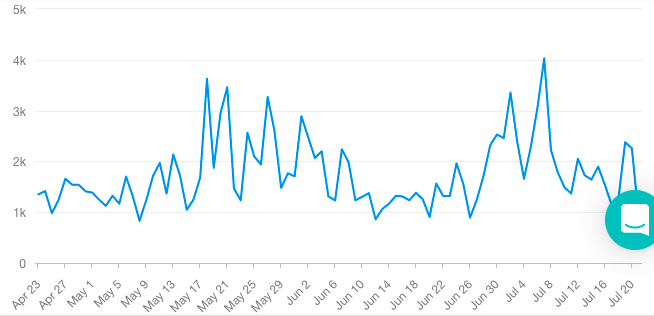
COVID-19 is inescapable, it is pervasive even when it is absent in the community. Our whole lives are currently dictated by its presence, our future dependent on its virulence. It is therefore no surprise it dominates media coverage.
As we outlined in a recent blog post, pitching a health story in this climate is challenging even if your story is COVID related, but pitching a non-COVID story is perilous without solid news values.
To give you an idea what you’re up against, according to our media monitoring software Meltwater, there have been 2.61 million mentions of “COVID-19” in Australian media alone over the last 90 days.
We have decided to examine the recent media coverage of three traditionally important illnesses: cancer, diabetes and flu. Diabetes and cancer are two of the biggest health challenges facing Australia of course, but we have included flu as we are right in the middle of season.
In 2020, it was estimated there were around 150,000 new diagnoses of cancer and close to 50,000 deaths from it. As one of Australia’s leading causes of death and with so many variations, it has always been at the heart of health media coverage.
Each time there is a breakthrough in cancer treatment, it is covered by the media as a step forward for mankind and received by the public with hope and buoyancy for our future.
In the last 90 days, there have been 269,000 mentions of cancer in Australian media. Interestingly, breast cancer appeared most frequently of all cancers with over 7,500 mentions.
The graph below shows mentions of ‘cancer’ in Australian media, April 22–19 July 2021.

Like cancer, diabetes is another one of Australia’s top five causes of death. It is often considered Australia’s greatest health challenge due to the number of people living with the disease.
Diabetes Australia estimates around 1.8 million people have diabetes nationally, which includes an estimated 500,000 with undiagnosed type 2 diabetes. It places a huge burden on the health system, which is why many in the health industry were surprised at the lack focus afforded to the disease in the recent federal budget.
With such a large patient group and National Diabetes Week between 11th July and 17th July, it is also surprising to see a relative lack of media coverage. Over the last 90 days there have been just 42,000 mentions of diabetes in Australian media, putting at the bottom of the pile in our three non-COVID health stories.
The graph below shows mentions of ‘diabetes’ in Australian media, April 22–19 July 2021.

The forgotten virus. Influenza numbers have been pushed down to the point of near extinction due to lockdowns. There is also ongoing research from scientists into how the viruses interact and whether a Darwinian plot twist might occur where COVID-19 pushes out flu.
This pandemic has invited natural comparisons between COVID-19 and flu. Both are respiratory viruses that cause mortalities. The 2019 flu season was the second worst on record in Australia with 300,000 cases and 800 influenza associated deaths.
When policy makers imagine a future where we live with COVID-19, seasonal flu is often cited as a similarly lethal virus we tolerate living with, therefore we can expect the same with COVID-19.
As a result, flu benefits from considerable airtime in the media, particularly in seasonal months (May to September). In the last 90 days there have been 167,000 mentions in the media, with peak days in May and July.
The graph below shows mentions of ‘flu’ in Australian media, April 22–19 July 2021.

It is fiendishly hard to get non-COVID stories published in the current news cycle. However, the public has never been better engaged in health stories. When you are successful, your story could be more impactful than before the pandemic.
Is media interest growing for non-COVID stories? Well, it’s hard to gauge. This isn’t to say things are changing and the media is re-engaging with other diseases, but some green shoots are there which will grow as move deeper into our vaccine roll-out and think about life beyond the pandemic.
Your approach to media relations in this environment must remain ruthlessly strategic and tactical. Pick your battles and be certain that a non-COVID story contains a news hook, because ‘slow news days’ are few and far between in 2021.